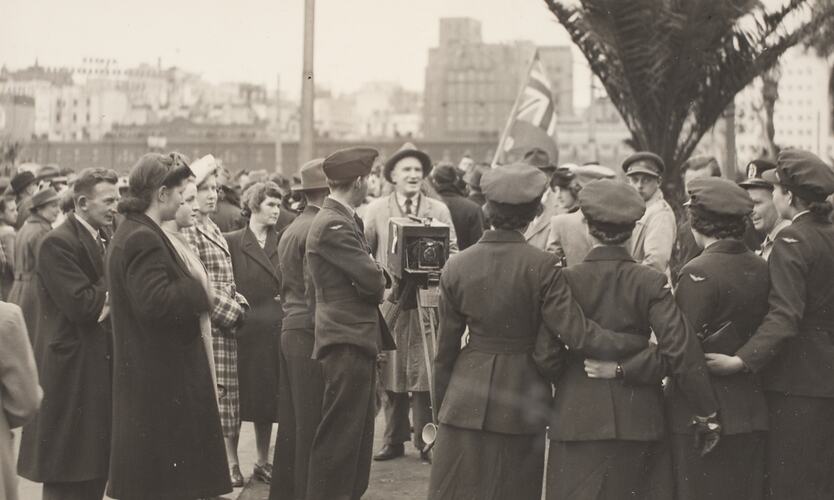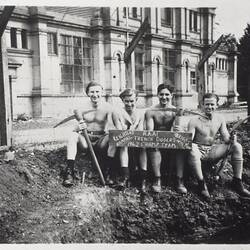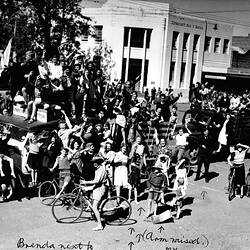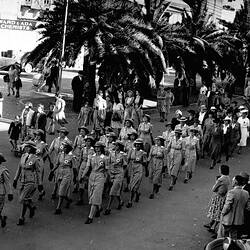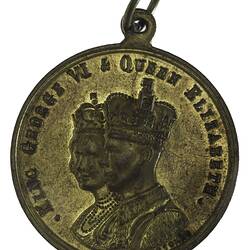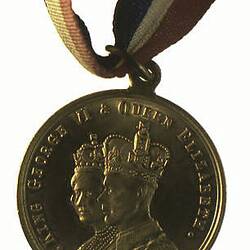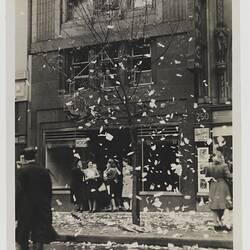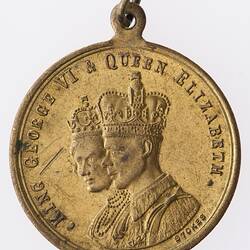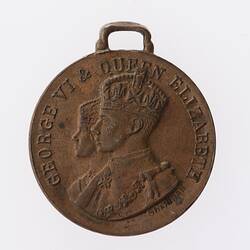Victory in the Pacific (VP) Day, also known as VJ (Victory over Japan) Day, was first celebrated in 1945. On 15 August the ceasefire in the Pacific took effect following Japan's acceptance of the conditions of the Potsdam Declaration issued by the USA, China and Great Britain, ending World War II hostilities. Victory in the Pacific day was declared a public holiday, as was the following day, 16 August. Australia had been at war for five years, 11 months and 11 days.
News of the victory spread quickly on the morning of Wednesday 15 August. The Herald newspaper reported that 'Melbourne is boiling over with joy. A quarter of a million people who heard the news just as they started work, turned out into the streets as soon as the full truth of it dawned on them. They turned the streets to snowstorms with torn paper before they left their offices and then yelled and cheered and sang for hours in packed roadways. Bands started up and kept the whole city milling like a huge circus as the people poured around the main blocks. Hours passed before anybody was calm enough for dancing in the streets to the music of the bands and the mobile broadcasters the City Council had provided. Although crowded trams and trains took a big proportion of the people away to celebrate at home, the heart of the city was so crowded at midday that ambulances had great difficulty in getting through.' A thanksgiving service was held at the Shrine of Remembrance at noon, followed by a military salute of 100 guns from Alexandra Gardens. At 7.30pm, 4,000 rockets were fired from a battery at Albert Park, and search lights flooded the sky. A Victory Ball was held at the Palais Royale in the Exhibition Buildings (now the Royal Exhibition Building), where thousands of RAAF and WAAAF personnel had been stationed. The public were welcomed to 'make tonight the night of nights', and enjoy a night of 'special music and community singing', with 'paper caps given away'.
Across Victoria, victory church services were held, bells pealed, and concerts, balls and spontaneous gatherings were amongst the many celebrations of VP Day.
After the two-day holiday ended children took part in patriotic ceremonies, songs and recitations at their schools.
The official surrender of Japan took place on 2 September 1945 on the USS Missouri, moored in Tokyo Bay.
References
'Victory in the Pacific (VP) Day', Department of Veterans' Affairs, Australian Government, https://www.dva.gov.au/newsroom/media-centre/media-backgrounders/victory-pacific-vp-day, accessed 15/6/2020.
1945 'Confetti Showers Upon City's Roistering Crowds', The Herald (Melbourne, Vic. : 1861 - 1954), 15 August, p. 3. , viewed 15 Jun 2020, http://nla.gov.au/nla.news-article249164297.
1945, The Herald (Melbourne, Vic. : 1861 - 1954), 15 August, p. 1. , viewed 15 Jun 2020, http://nla.gov.au/nla.news-page26702106.
1945 'PEACE CELEBRATIONS IN THE CITY', The Age (Melbourne, Vic. : 1854 - 1954), 15 August, p. 5. , viewed 15 Jun 2020, http://nla.gov.au/nla.news-article204021008.
Potsdam Declaration, 26 July 1945, https://www.ndl.go.jp/constitution/e/etc/c06.html, accessed 15/6/2020.
1945 'Advertising', The Herald (Melbourne, Vic. : 1861 - 1954), 15 August, p. 6. , viewed 30 Jul 2020, http://nla.gov.au/nla.news-article249164362.
More Information
-
Keywords
Military History, Australian Native Animals, Aviation, Buildings, Ceramics, Child Development, Children, Children's Folklore, Children's Play, Clothing, Early Childhood Development, Education, Educational Technology, Dolls, Folklore, Games, Handmade Games & Toys, Hobbies, Indigenous Peoples
-
Localities
-
Authors
-
Article types
